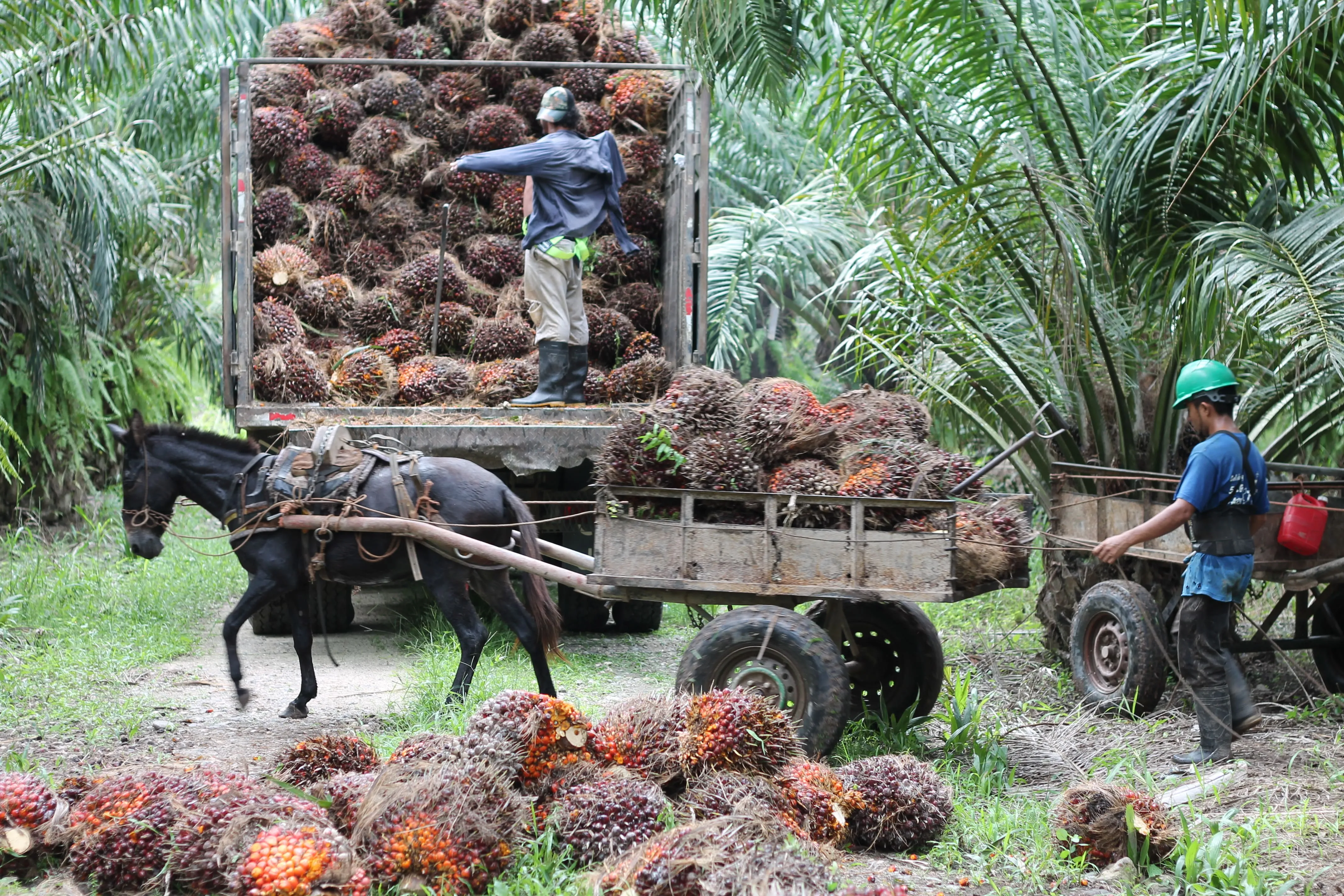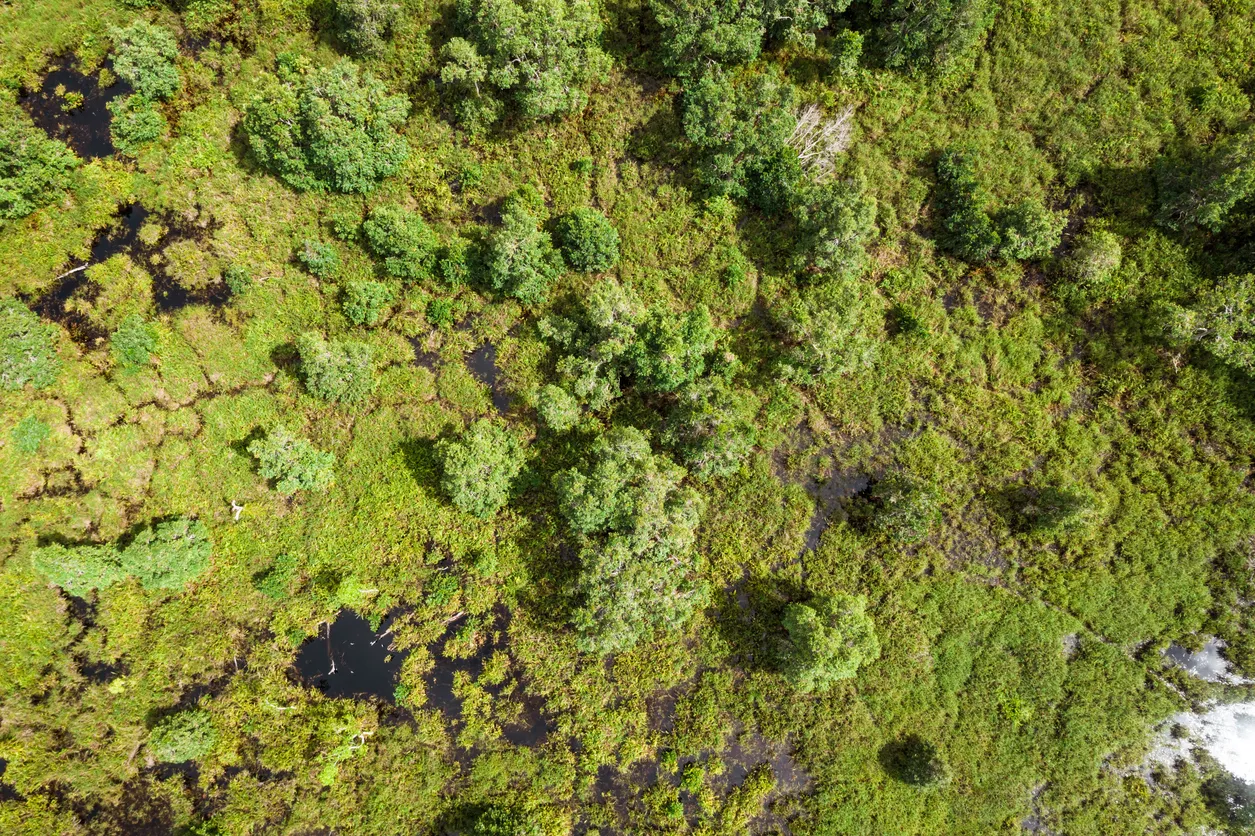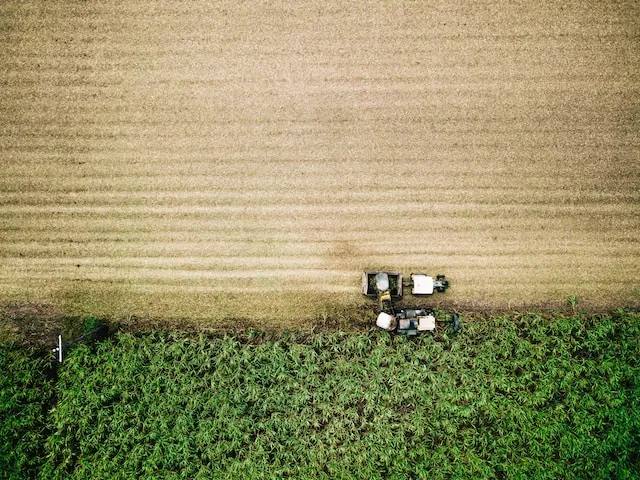
HCV Screening and TNFD’s LEAP Framework: getting a good start in identifying and managing nature-related risks
With the release of TNFD’s finalised Recommendations for nature-related risk management and disclosure, the call for structured and demonstrable action by business and finance to avoid activities that have a detrimental effect on the global environment, nature and associated livelihoods, has once again grown louder.
Taking meaningful steps to prevent harm in places where an organisation has direct presence is daunting, let alone where there are finance, upstream, or downstream assets with no direct organisational control. There’s a multitude of factors to consider. That’s why TNFD’s Framework maps out coherent steps that break the task into manageable pieces, giving momentum to how to set in motion the informed decision-making needed to halt and eventually reverse the loss of nature.
Identify values, set priorities
TNFD’s LEAP Framework begins with a look at what it terms the “nature interface”. If a business or potential investor clearly understands where they risk an unwanted impact, they are in a better position to make decisions to control that impact, and take alternative actions to drive positive outcomes instead.
But how do you get a picture of this interface with nature without drowning in academic or technical detail? Many tools and services exist to help ensure the most significant risks are identified, and among one of most widely utilised approaches to inform action is the identification of High Conservation Values – commonly referred to as “HCVs”. An HCV is a biological, ecological, social, or cultural value of outstanding significance or critical importance. This suite of values includes rare, threatened, or endangered habitats and ecosystems, large landscape scale ecosystems, and intact forest landscapes, and nature’s contribution to people. TNFD’s launch highlighted new strategy disclosure recommendations on “priority locations” – defined by criteria for sensitive locations, which the work of identification of HCVs already enables.
The HCV Network (HCVN) provides tools and guidance especially designed to inform the actions of business and finance as they commit to avoiding the loss or degradation of critical environmental and social assets. In fact, the tools are informed by the practical experience of the commodity producers and standards, technical service providers, and NGOs, and continuously improved through piloting, consultations, and active use. Today, many commodity producers have taken or are undertaking site level assessments of HCVs. These HCV assessments can be leveraged as they provide insights into managing core environmental and social values which is pertinent to the TNFD framework as organisations look to understand risks and opportunities.
Already referenced by TNFD and other initiatives like the Science Based Targets for Nature, and Accountability Framework initiative, as well as global sustainability standards, HCV tools are well placed to enable practical action by those organisations stepping up to help meet the global goals and considering acting against the TNFD LEAP framework.
Screen rapidly, gain insights, plan actions
One HCVN tool to consider first when taking action on LEAP is HCV Screening. Whether individually or collectively, producers, buyers, and other stakeholders can use HCV screening to establish the probability of HCVs in a given landscape or location, identify threats to those HCVs, and work out a priority for their further follow up, full assessment, protection, management and monitoring.
Using the HCV Approach for the LEAP Framework
.webp)
LEAP’s first step is to Locate the interface with nature, and sub steps L1 to L4 ask: L1 Which biomes and ecosystems do these activities interface with? L2: What is the current integrity and importance of the ecosystems at each location? L3: Priorities according to the integrity and relative importance of relevant ecosystems? This step concludes with L4: Identification of priority nature-risk locations by sector, business unit or value chain.
HCV Screening provides answers to these questions due to the very nature of HCVs, and having been purposely built to answer “what are the potential HCVs in this region?”, “where are these values located?”, and importantly “who are the users of these values?”. Where organisations are at the start of assessing the impact of their operations, screening also shows where gaps in information require further follow up, gives a picture of risks and threats, and signals priorities.
Moving on through the LEAP Framework, to Evaluate priority dependencies and impacts and Assess material risks and opportunities, HCV screening provides a description of risk - risk profile or footprint - in the landscape that the organisation is operating in, and prioritises where further investigation is needed in the Framework’s E, A and P steps. By asking “what are the existing threats to the values?”, “what area is needed to maintain the values?”, and more broadly “how should landscapes be managed?” we reach risk and opportunity identification, see possibilities for coordinated effort and collaboration, and build a realistic picture of what is required in risk management efforts.
Undertaking a screening process can serve as a tested, cost-effective, and rapid approach to identify the nature interface at any scale, context, or commodity, whether under certification or not - providing analytical insights to get organisations as clear as possible in their identification of priority nature-risk locations. This also helps avoid undertaking potentially costly, detailed assessments in places where risks are low, and ensure high risk scenarios are given the attention they deserve.
The groundwork to LEAP’s Prepare to respond and report, is set up through establishing priorities and asking “what needs to be monitored?”, “how will monitoring be done?” and “how will the results of monitoring be used?”. This informs organisational strategy and resourcing, target setting and performance management, and makes sure there is a strong feedback loop between actions taken, outcomes, follow up assessments, targeted field work and consequent impact reporting.
Planning of more detailed assessments to pin down where specific action is needed to prevent environmental and social loss or harm feeds into the LEAP Prepare step, when organisations are setting their strategy and targets. This is where full HCV Assessments can be planned to provide definitive maps of these critical values, and make recommendations for their protection in collaboration with local stakeholders. In high risk settings, credible quality assurance of HCV Approach implementation through the use of licensed assessors under HCVN’s Assessor Licensing Scheme, leads to publicly accessible HCV assessment reports. While several sustainability schemes require the HCV Network’s quality assurance to ensure produce certificated to their production standards is maintaining HCVs, this is particularly helpful for high risk-sectors and commodities where certification is still limited, such as in soy, cattle and natural rubber.
Ensuring people are part of the process
Another element emphasised in TNFD’s recommendations launch for business and finance was the engagement of Indigenous Peoples and Local Communities, and affected stakeholders. HCVN tools build in the social engagement steps essential for credible risk assessment and subsequent decision making on the most appropriate actions to take. No business or investor is completely separate to the people and communities where an operation is taking place, and to their issues and concerns. The important elements of this can be evaluated right from the screening of a landscape, and in more explicit detail for a site. Developing greater social engagement and input often is the missing link to making positive change happen and last. By building shared understanding with local communities and stakeholder groups of what values might be at risk, formally identifying the benefits they are providing, and coming to agreement on what needs to be protected, builds trust and helps find better long-term solutions. And it doesn’t end there, as the critical role of management and monitoring is where local stakeholders can play a meaningful role in ensuring robust outcomes, accountability and transparency. The HCVN’s Forest Integrity Assessment tool – or FIA, readily adapted to different locations, is one example of how great data and knowledge can be gathered in collaboration with communities, to inform business activities.

Protecting what we rely on
Promoting the protection of High Conservation Values as part of the LEAP Framework makes sense. The six categories of HCVs are key to a healthy planet and society: species diversity, landscape level ecosystems, habitats, ecosystem services, community needs and cultural values. The consequent financial losses of these to society and to the global economy are also starting to be realised. They are not just a “nice to have” part of our world.
We urgently need more and more businesses and investors to halt the loss of nature and take action to bring about positive change. HCVN encourages the wide uptake of the LEAP Framework and calls for stakeholders to discover what tools, approaches and experience are already there and can help them contribute to the Global Goals and build a greener, fairer, better world by 2030. The more organisations stepping up to the TNFD Adoption campaign, the faster we will see the changes we need unfold.
Through the breadth of its work in different locations, contexts, scales and commodities, HCVN understands that approaches that build understanding, set priorities, frame action, are the ones that add to measurable positive change and impact.
The Economist recently wrote “Don’t let fear of imperfection stop you from taking action on nature and biodiversity—frameworks, standards and technology are here to help”.
Find out more about HCV screening, HCV assessments and HCV quality assurance as ready-to-use tools to help with your LEAP framework commitment. We welcome you to get in touch via secretariat@hcvnetwork.org and to read more about our work and find further HCVN resources online.
Related Posts
Protegiendo el carácter ambiental y social único del sureste de México con el Enfoque de AVC
Hace dos años, HCVN y FEMEXPALMA firmaron un acuerdo de cooperación para promover prácticas sostenibles de producción de aceite de palma a través de la conservación, el desarrollo de capacidades y la divulgación. Hoy, el involucramiento de los pequeñosproductores se ha vuelto esencial en la protección de los Altos Valores de Conservación.
Read MoreProtecting southeastern Mexico’s unique environmental and social character using the HCV Approach
Two years ago, HCVN and FEMEXPALMA signed a cooperation agreement to promote sustainable practices in palm oil production through conservation, capacity building, and outreach. Today, the contributions of small-scale producers have become essential in the protection of High Conservation Values.
Read MoreDébloquer des incitations pour des solutions fondées sur la nature avec les communautés forestières
L'outil Forest Integrity Assessment (FIA) est une approche de liste de contrôle simple et conviviale conçue pour permettre aux gestionnaires de terres et à d'autres non-biologistes d'effectuer des estimations rapides et efficaces de l'état de la biodiversité forestière.
Read MoreOur Partnerships
Alongside many global initiatives, our work with partners promotes practices that help meet the global Sustainable Development Goalsand build a greener, fairer, better world by 2030.


Femexpalma
In April 2022, FEMEXPALMA and the HCV Network signed a 5-year cooperation agreement to promote sustainable production of palm oil in Mexico. FEMEXPALMA is a Mexican independent entity that represents palm production at the national level and promotes the increase of productivity in a sustainable way.
With global markets becoming stricter, for Mexican producers to be able to export to key markets such as the European Union, they must meet strict requirements such as certification by the Roundtable on Sustainable Palm Oil (RSPO). To be certified by RSPO, the HCV Approach must be applied prior to the establishment of any new oil palm plantations. With this cooperation agreement, the HCV Network will support FEMEXPALMA’s members and allies to design better strategies to identify, manage and monitor High Conservation Values and support smallholders to achieve RSPO certification and implement good agricultural practices.
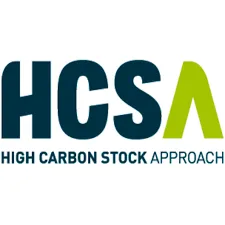

High Carbon Stock Approach
The High Carbon Stock Approach (HCSA) is an integrated conservation land use planning tool to distinguish forest areas in the humid tropics for conservation, while ensuring local peoples’ rights and livelihoods are respected.
In September 2020, HCV Network and the HCSA Steering Group signed a five-year Memorandum of Understanding (MoU) to strengthen their collaboration to conserve forests and uphold community rights in tropical forests. The HCS and HCV Approaches are cornerstones of corporate no deforestation and conservation commitments, and increasingly for actors working at different scales. The collaboration aims to further support effective implementation of these commitments through increased uptake of the HCV and HCS tools.
Through this MoU, HCSA and HCVRN are pursuing two main strategic goals:
- Strive to promote the application of the two approaches in tropical moist forest landscapes and explore further opportunities for collaboration.
- Ensure that, where the two approaches are applied together, this happens in a coordinated, robust, credible, and efficient manner, so that HCS forests and HCVs are conserved, and local peoples’ rights are respected.


World Benchmarking Alliance
From May 2022, the HCV Network is an ally at the World Benchmarking Alliance (WBA). WBA is building a diverse and inclusive movement of global actors committed to using benchmarks to incentivise, measure, and monitor corporate performance on the SDGs, and will assess and rank the performance of 2,000 of the world’s most influential companies against seven systems of transformation by 2023.
The scope of WBA’s circular transformation was expanded to cover nature and biodiversity as recognition of the need for greater understanding, transparency and accountability of business impact on our environment. The WBA Nature Benchmark was launched in April 2022, which will be used to rank keystone companies on their efforts to protect our environment and its biodiversity. As HCV Areas are recognised as key areas important for biodiversity, companies that publicly disclose their actions to identify and protect HCVs will contribute to the assessment of their performance against the benchmark.
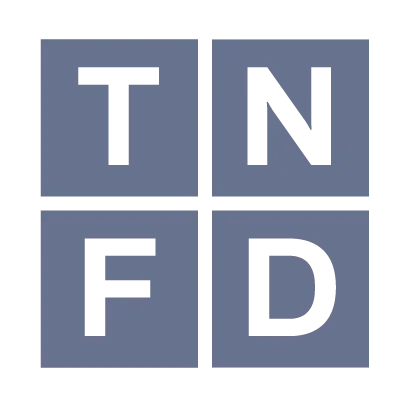

Taskforce on Nature-related Financial Disclosures - TNFD
The Taskforce on Nature-related Financial Disclosures (TNFD) is a global, market-led initiative, established with the mission to develop and deliver a risk management and disclosure framework for organizations to report and act on evolving nature-related risks, with the aim of supporting a shift in global financial flows away from nature-negative outcomes and toward nature-positive outcomes.
In April 2022, the HCV Network joined the TNFD Forum. The TNFD Forum, composed of over 400 members, is a world-wide and multi-disciplinary consultative network of institutional supporters who share the vision and mission of the task force.
By participating in the Forum, the HCV Network contributes to the work and mission of the taskforce and help co-create the TNFD Framework which aims to provide recommendations and advice on nature-related risks and opportunities relevant to a wide range of market participants, including investors, analysts, corporate executives and boards, regulators, stock exchanges and accounting firms.


Aquaculture Stewardship Council
The Aquaculture Stewardship Council (ASC) is the world’s leading certification scheme for farmed seafood – known as aquaculture – and the ASC label only appears on food from farms that have been independently assessed and certified as being environmentally and socially responsible. In 2021, the HCV Network and ASC formalised their collaboration through a Memorandum of Understanding (MoU). The MoU represents the first step in a fruitful relationship aimed at conserving HCVs in aquaculture. Although, existing guidance on the use of the HCV Approach currently focuses mainly on forestry and agriculture, the HCV Approach is however generic, and in principle also applicable to aquatic production systems. Through this MoU, this is recognised by the Aquaculture Stewardship Council (ASC) in their ASC farm standard, in which the protection of HCV areas is mentioned in the context of expansion


Accountability Framework Initiative
The Accountability Framework initiative (AFi) is a collaborative effort to build and scale up ethical supply chains for agricultural and forestry products. Led by a diverse global coalition of environmental and human rights organizations, the AFi works to create a “new normal” where commodity production and trade are fully protective of natural ecosystems and human rights. To pursue this goal, the coalition supports companies and other stakeholders in setting strong supply chain goals, taking effective action, and tracking progress to create clear accountability and incentivize rapid improvement. In July 2022, the HCV Network joined AFi as a Supporting Partner. AFi Supporting Partners extend the reach and positive impact of the AFi by promoting use of the Accountability Framework by companies, industry groups, financial institutions, governments, and other sustainability initiatives, both globally and in commodity-producing countries.


Biodiversity Credit Alliance
The Biodiversity Credit Alliance (BCA) is a global multi-disciplinary advisory group formed in late 2022. Its mission is to bring clarity and guidance on the formulation of a credible and scalable biodiversity credit market under global biodiversity credit principles. Under these principles, the BCA seeks to mobilize financial flows towards biodiversity custodians while recognising local knowledge and contexts.
The HCVN joined the BCA Forum in August 2023 to learn more from the many organizations already coming together to find effective pathways to opening up credit-based approaches, and how to contribute our knowledge and experience of years of working in a practical way, often with global sustainability standards and their certified producers, to protect what matters most to nature and people.
.webp)
.webp)
Nature Positive Forum
The Nature Positive Initiative is a group of stakeholders coming together to find ways to unlock success and achieve Nature Positive - a global societal goal defined as ‘halt and reverse nature loss by 2030 on a 2020 baseline, and achieve full recovery by 2050’, in line with the mission of the Kunming-Montreal Global Biodiversity Framework.
Core work includes preserving the integrity of ‘Nature Positive’ as a measurable 2030 global goal for nature for business, government, and other stakeholders, and providing the tools and guidance necessary to allow all to contribute. The initiative also advocates for the full implementation of the Kunming-Montreal Global Biodiversity Framework by governments and other stakeholders.
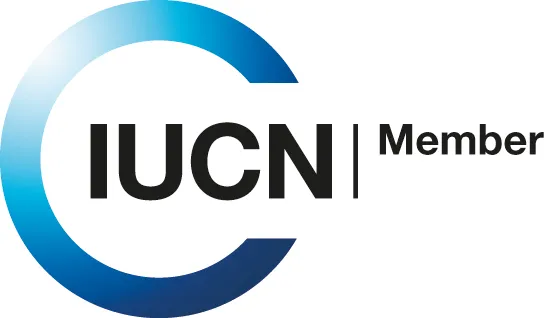

IUCN
IUCN is a membership Union uniquely composed of both government and civil society organisations. It provides public, private, and non-governmental organisations with the knowledge and tools that enable human progress, economic development, and nature conservation to take place together.
Created in 1948, IUCN is now the world’s largest and most diverse environmental network, harnessing the knowledge, resources and reach of more than 1,400 Member organisations and around 15,000 experts. It is a leading provider of conservation data, assessments, and analysis. Its broad membership enables IUCN to fill the role of incubator and trusted repository of best practices, tools, and international standards.
IUCN provides a neutral space in which diverse stakeholders including governments, NGOs, scientists, businesses, local communities, indigenous peoples’ organisations, and others can work together to forge and implement solutions to environmental challenges and achieve sustainable development.
Working with many partners and supporters, IUCN implements a large and diverse portfolio of conservation projects worldwide. Combining the latest science with the traditional knowledge of local communities, these projects work to reverse habitat loss, restore ecosystems, and improve people’s well-being.

Get Involved
Our Mission as a network is to provide practical tools to conserve nature and benefit people, linking local actions with global sustainability targets.
We welcome the participation of organisations that share our vision and mission to protect and enhance High ConservationValues and the vital services they provide for people and nature. By collaborating with the Network, your organisation can contribute to safeguarding HCVs while gaining valuable insights and connections that support your sustainability goals.
We are seeking collaborative partners to help expand and enhance our work, as well as talented professionals who can join the growing Secretariat team, and for professionals who can contribute to the credible identification of High Conservation Values globally.
Join us in securing the world’s HCVs and shaping a sustainable future.
